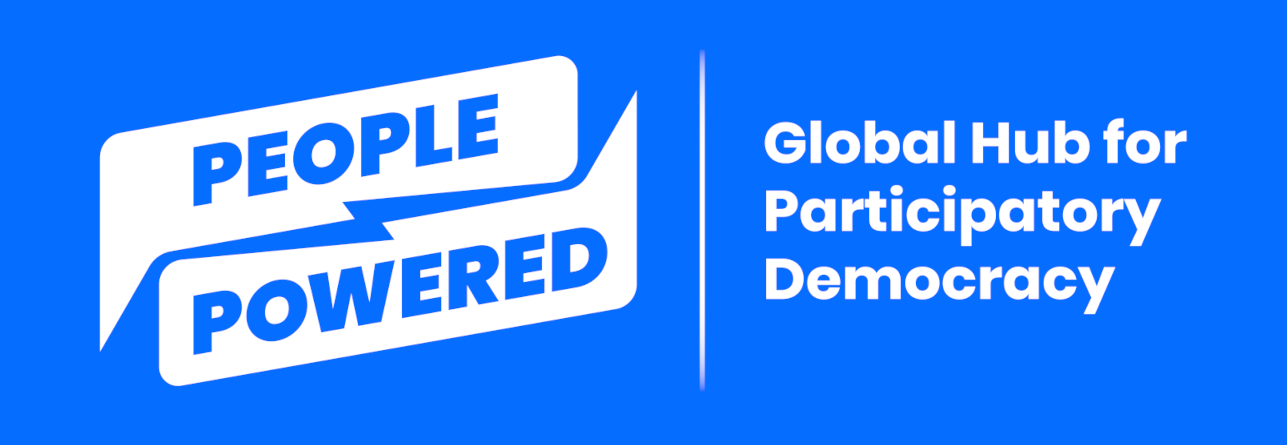Want citizen engagement in parliament? Here’s how to overcome five possible roadblocks
/We’re seeing a global decline in public trust, with people increasingly dissatisfied with their representatives in government. That’s why the focus of our first research-to-practice talk for 2023 was how legislatures can more meaningfully engage their constituents in decision-making. Brenda Ogembo, deputy head of Kenya’s Senate Liaison Office, led the discussion, followed by a perspective from civil society by John Kinuthia, senior program officer for the Kenya office of the International Budget Partnership. Here are a few highlights:
The definition of ‘citizen engagement’ may be contested
Brenda Ogembo
One of the risks in this space, noted Brenda, is that “engagement” can mean different things to different people.
“When you don’t define it, there’s a lot of room for interpretation and subjectivity, which leads to frustration,” said Brenda, who wrote her Ph.D. thesis on the topic and has worked in the Kenyan parliament since 2014. “That’s why it’s important to come to an agreement, ideally through legislation, about the goal, intended method of implementation and desired outcome of citizen engagement. Then it will be understood whether it's really about deliberation, like we see with citizens’ assemblies, or simply the expansion of civic space, in which citizens are expected to share their views, but not necessarily impact policy.”
In Kenya’s case, citizen engagement in government is guaranteed by the constitution; all legislative bodies, both at the national and the county level, are required to seek citizen input into their laws. But what it means in practice to incorporate citizens is not spelled out. And no overarching legislation has been enacted to offer more clarity.
“Failing to understand the differing expectations and come to a common understanding is often the first stumbling block in trying to institutionalize citizen engagement,” noted Brenda.
The United Nations’ 16th SDG (sustainable development goal) calls for more parliamentary openness and responsiveness. And in 2021, the Commonwealth Parliamentary Association released a report providing guidelines to help achieve that.
Parliamentary characteristics can be roadblocks
One reason why citizen-engagement efforts fall short is the innate character of legislatures.
John Kinuthia
“You see, they were originally designed for internal deliberation, to be bodies of citizen-elected members that then represent the interests of the people. They see decision-making as their job,” Brenda explained. “As a result, their rules and procedures have evolved over the years to act as symbols of their authority.”
The attachment to those symbols is stronger than civil society actors tend to realize.
“They're often very rigid and not easy to amend. So, when actors such as donors or civil society activists push for inclusive deliberation platforms such as online engagement spaces, there often exists no formal process or procedural rules for considering or including these views,” said Brenda.
The result is often elitist and exclusionary language, procedures and physical setups. For example, a requirement that people submit testimony on legislation in writing can exclude individuals who are illiterate, or who do not have access to the digital platform the parliament asks them to use. Ordinary citizens in comparison to organized groups are also often given less access to information; thus, when they present their views, the parliament accords them less weight.
Another example of this elitism is the often-exclusionary nature of the physical architecture of the parliament building which includes artifacts that can be used to meaningfully direct social interaction of participants both knowingly and unknowingly. Georgina Waylen and Oliver Escobar have researched this extensively. For example, the photo below shows the assembly building that hosted a county budget hearing observed by Brenda during her research.
Budget hearing of the Nairobi County Assembly
“Notice the two-tier, theater-style seating arrangement, with legislators sitting on a raised dais,” Brenda instructed. “Members of the public sit at a lower level, communicating that the legislators are the dominant speakers, the ones who will be making decisions. Minor things like seating arrangements can be exclusionary without people realizing it; yet they can make the difference between the failure and success of a citizen-engagement exercise.”
An alternative is illustrated by the Scottish Parliament, which has adopted a round-table format for its meetings, designed to share power and communicate equal opportunity.
John shared another example of physical barriers to inclusiveness:
“Nairobi is the capital city of Kenya. But Kenya is quite large; not everyone can come to Nairobi. So, we need to use our resources to make sure parliamentary citizen-engagement activities are accessible to those who are not traditionally accommodated.” He shared a photo from Mukutani, a village in Kenya’s Baringo County. Villagers chose a certain day to meet and created a comfortable space in which to deliberate. The result was very different from what it would have been if the villagers were required to travel to the parliament building in Nairobi.
The same benefit was seen when the Kenyan national assembly decentralized its public engagement around the budget by holding engagements in 12 different counties annually for several years.
Village meeting in Mukutani
Language is another consideration, noted Brenda. The bureaucratic or legalistic terminology used by parliaments can be difficult for ordinary people to understand, and thus promotes gatekeeping. “When citizens can’t express themselves in the same fashion, legislators and their staff often give less weight and value to their opinions.”
John stressed that members of parliament must appreciate that any individual has the capacity to engage with budgets and legislative processes. They do not need to be experts. Capacity-building with parliament members is necessary to develop this appreciation, however.
“We must recalibrate our beliefs about who should and shouldn't be in the room. That’s why, as Brenda said, parliamentary rules and norms can be a hindrance. They are usually very opaque. But the fact is, the only difference between ordinary citizens and legislators is the knowledge and resources the latter have been given. When legislators are first elected, they typically don’t have that knowledge either. We must design our processes to ensure that citizens also are given that capacity.”
Engagement needs resources
John added that another mandatory element is consistent, predictable funding. And that is the responsibility of members of parliament.
“The funding can’t just be for the day of the engagement,” he explained. “For example, before it starts, there must be civic education, to make sure citizens understand their role and the issues at hand. Parliamentary staff also must be educated so they can better understand how to engage with the very diverse body of citizens.”
Sustainability is essential
So, what should civil society organizations consider when advocating for and working to ensure the institutionalization of citizen engagement in legislatures? The first step, said Brenda, is for parliaments to rethink how they work. An example is permanent sortition chambers, such as the East Belgian project. Another is citizens assemblies convened to influence legislative decisions on specific issues such as the Irish Citizens Assembly. The key, she said, is for legislators to see citizens as co-creators—permanently, and not as a one-off initiative.
“By the way, it’s not just legislators who need to learn this,” Brenda added. “It's also important to address the domination and overshadowing by civil society organizations and other interest groups that have resources and extensive networks. We need to ensure that they don’t take the place of ordinary citizens. Often what we see is that civil society organizations or donor groups empower specific groups at specific times on issues that interest them, like a health policy that's coming up for review. They empower the people with access to information, along with analysis. Then, when the initiative is done and donors and civil society groups move on, the citizens leave and don’t come back. That’s why it's critical to teach citizens how to be advocates and to engage from an early age.”
John added that there's an unwritten assumption that government officials know how to run public deliberations. Capacity-building support for legislators is needed.
Brenda agreed. “These days capacity building isn’t popular, especially among civil society actors and donors. But it’s essential in this space. Citizen engagement goes against the governance traditions of parliament. If you leave it to them to do it on their own, they're likely to develop rules and procedures that reflect their usual traditions and practices.”
She adds that it's also important to build the capability of citizens to analyze, understand and contribute to complex issues in a way that makes their views meaningful.
Donors must design an exit route
It's important that citizens don’t rely on donor groups to drive their citizen engagement. Meanwhile, donors should review their agreements and re-examine both their focus and motivation.
“Donors should ask themselves why they are doing this work and if it’s sustainable,” concluded Brenda. “Can citizens continue to do the work without you?”







